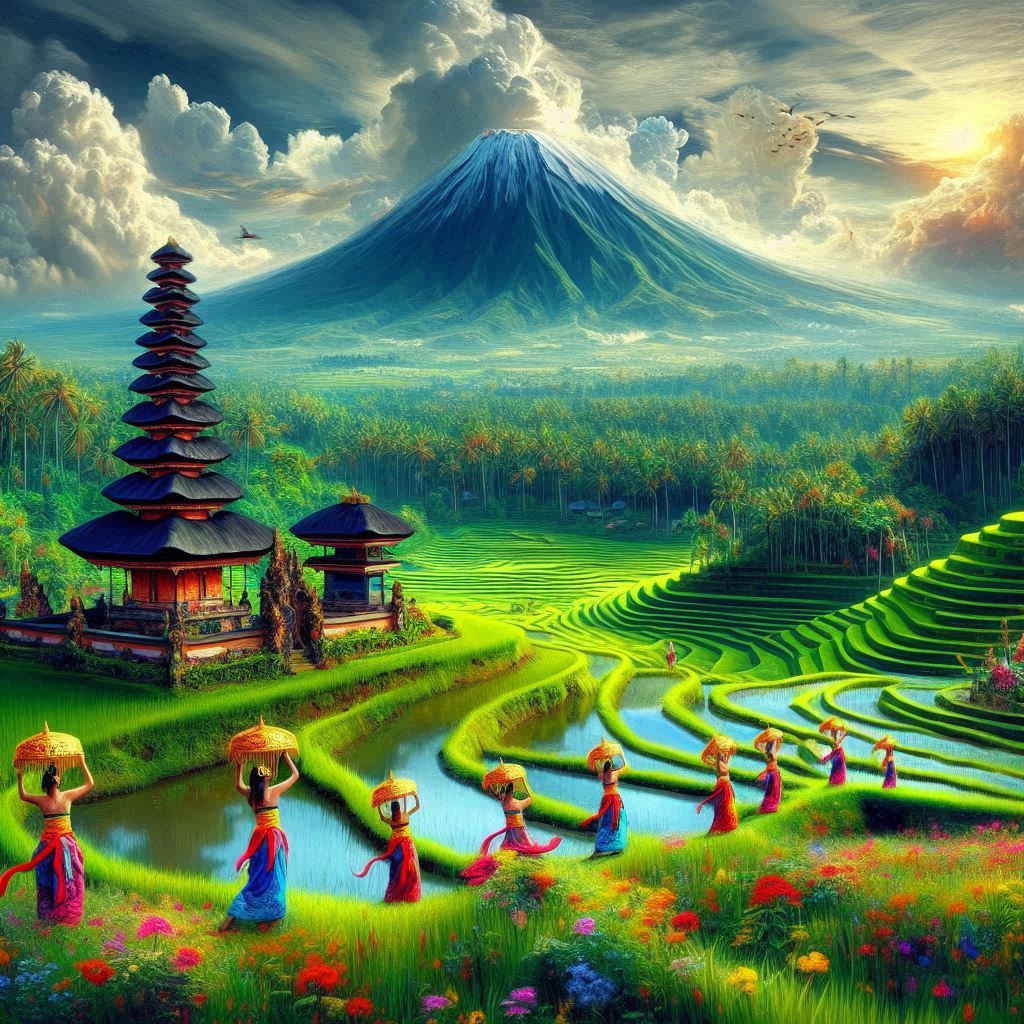
Nestled within the vibrant cultural tapestry of Indonesia lies the enchanting island of Bali, renowned for its picturesque landscapes, rich heritage, and captivating traditional arts. Among these treasured cultural gems, Bali’s traditional dance holds a distinguished place, serving as a testament to the island’s deep-rooted spirituality, artistic prowess, and unwavering commitment to preserving its cultural legacy. From the intricate movements of the Legong to the dramatic expressions of the Barong, Bali’s traditional dances encapsulate centuries of tradition, myth, and ritual, captivating audiences with their mesmerizing beauty and profound symbolism.
At the heart of Bali’s traditional dance is a profound reverence for spirituality and the divine. Rooted in Hindu-Balinese cosmology, these dances serve as sacred offerings to the gods, performed in temples and sacred ceremonies to invoke blessings, protection, and harmony. Central to this spiritual ethos is the concept of „Rasa,“ the aesthetic essence or emotional flavor imbued within each movement, gesture, and expression. Whether portraying tales of love, triumph, or divine intervention, Bali’s traditional dances are infused with Rasa, evoking a profound sense of beauty, devotion, and transcendence.
One of the most iconic forms of traditional dance in Bali is the Legong, a graceful and intricate dance characterized by its delicate movements, elaborate costumes, and evocative storytelling. Originating from the royal courts of Bali, the Legong is often performed by young girls who undergo rigorous training from a tender age, mastering the subtle nuances of expression, posture, and rhythm. Accompanied by the melodious strains of the gamelan orchestra, the Legong unfolds like a living tapestry of myth and legend, recounting tales of romance, heroism, and spiritual awakening.
Another emblematic dance of Bali is the Barong, a vibrant and dynamic performance that brings to life the eternal struggle between good and evil. At the heart of the Barong dance is the mythical creature known as Barong Ket, a benevolent lion-like figure representing the forces of light and protection. Opposing the Barong is Rangda, the malevolent queen of demons, whose sinister presence threatens the balance of the universe. Through intricate choreography, elaborate costumes, and powerful symbolism, the Barong dance enacts this timeless battle, culminating in a triumph of virtue over darkness.
Beyond its spiritual significance, Bali’s traditional dance also serves as a vibrant expression of community identity and social cohesion. In rural villages across the island, dance rehearsals and performances are integral to the fabric of daily life, bringing together people of all ages and backgrounds in a shared celebration of culture and tradition. From the lively festivities of the temple festivals to the solemn rituals of the village ceremonies, traditional dance permeates every aspect of Balinese society, fostering a deep sense of belonging and solidarity among its people.
Despite the enduring allure of Bali’s traditional dance, its preservation faces formidable challenges in the modern age. Rapid urbanization, globalization, and the encroachment of Western influences pose threats to the continuity of Balinese cultural traditions, leading to concerns about the erosion of authentic practices and values. Furthermore, the COVID-19 pandemic has dealt a devastating blow to Bali’s tourism-dependent economy, severely impacting the livelihoods of many traditional artists and performers.
However, amidst these challenges, there remains a steadfast commitment to safeguarding Bali’s cultural heritage for future generations. Efforts to revitalize traditional dance have taken various forms, including cultural education programs, community-led initiatives, and collaborations between local artists and international institutions. Organizations such as the Indonesian Arts Institute and the Bali Cultural Agency play a crucial role in supporting and promoting traditional dance, providing training, resources, and platforms for aspiring artists to hone their craft and showcase their talents.
Moreover, the rise of digital technology has opened up new avenues for the dissemination and appreciation of Bali’s traditional dance on a global scale. Through online platforms, virtual performances, and multimedia exhibitions, audiences from around the world can experience the magic of Balinese dance from the comfort of their homes, fostering cross-cultural dialogue and appreciation.
Conclusion
Bali’s traditional dance is not merely a relic of the past but a living, breathing testament to the island’s enduring spirit and cultural resilience. Rooted in ancient tradition yet ever-evolving, these dances continue to inspire, enchant, and uplift audiences with their timeless beauty and profound symbolism. As guardians of Bali’s cultural heritage, it is incumbent upon us to cherish, preserve, and celebrate these cherished traditions, ensuring that the rhythmic heartbeat of Bali’s dance remains alive for generations to come.